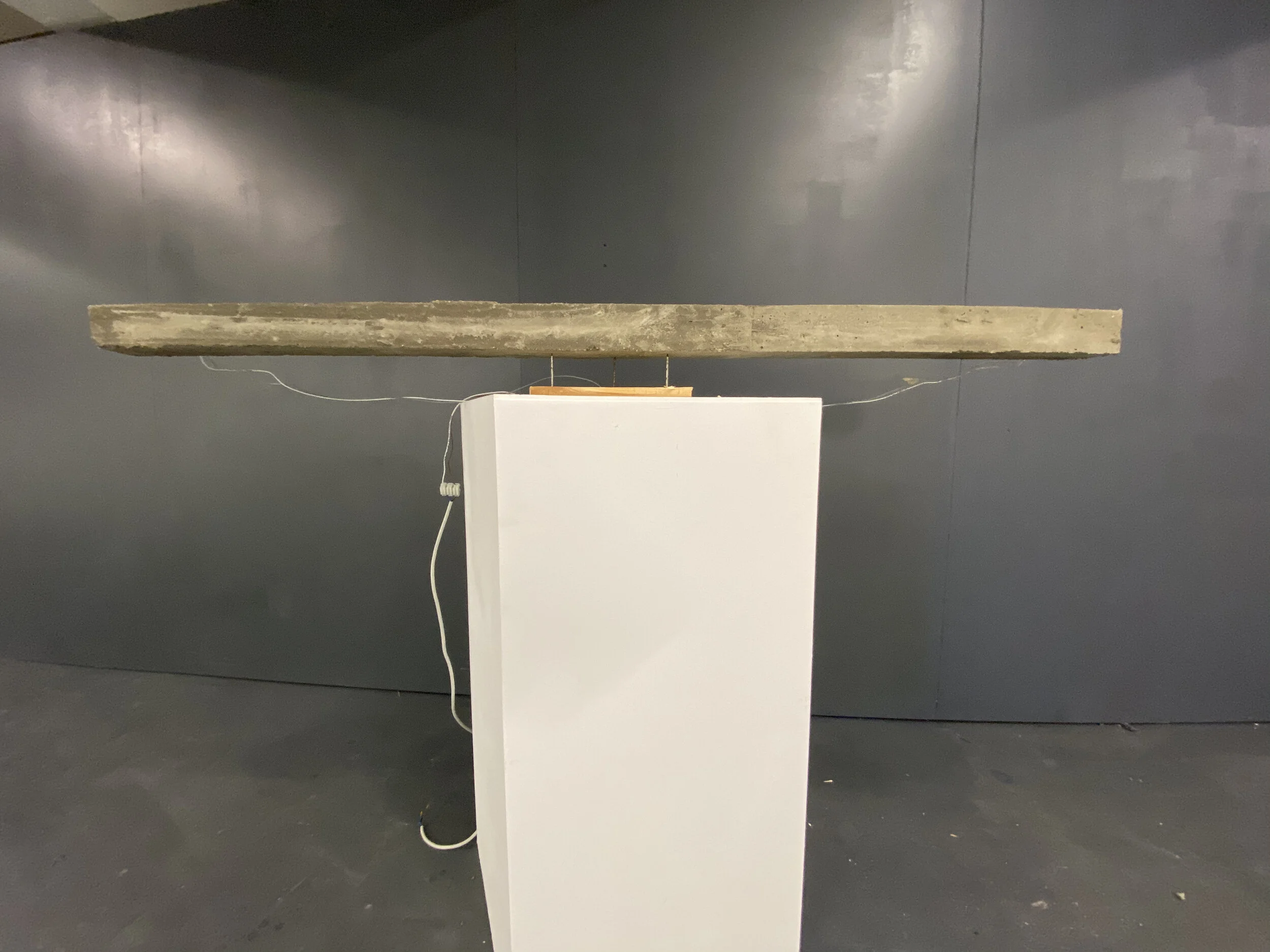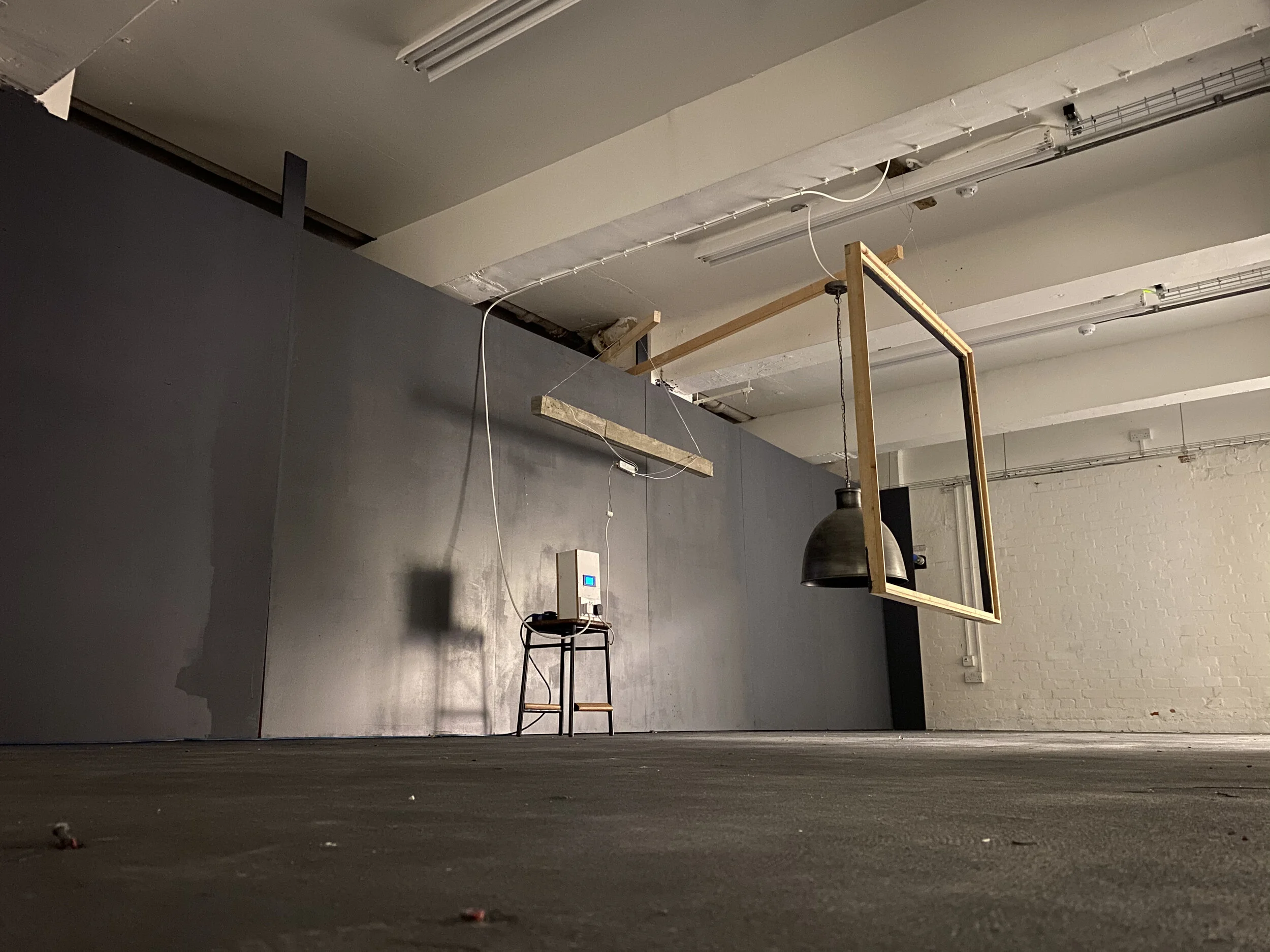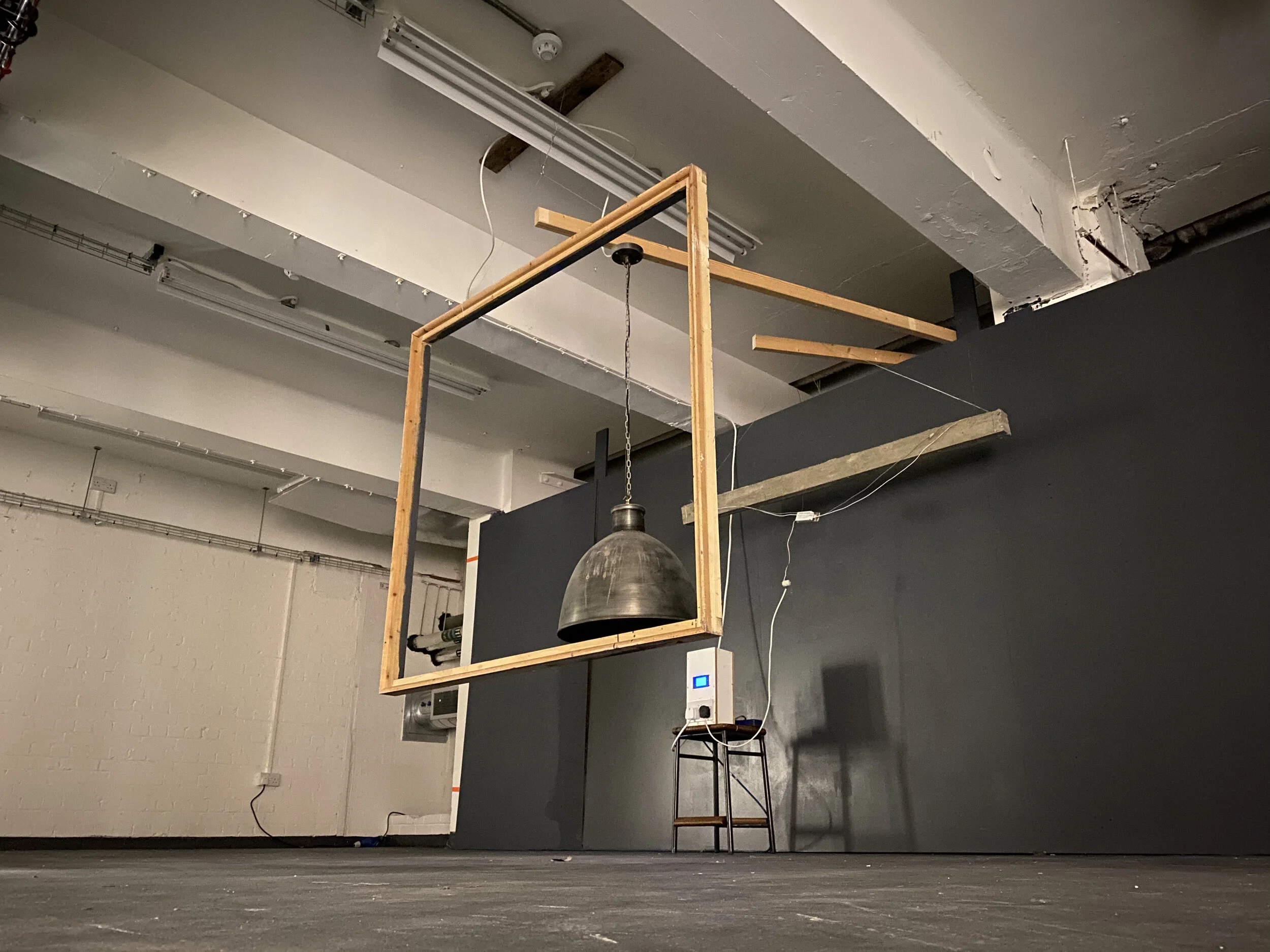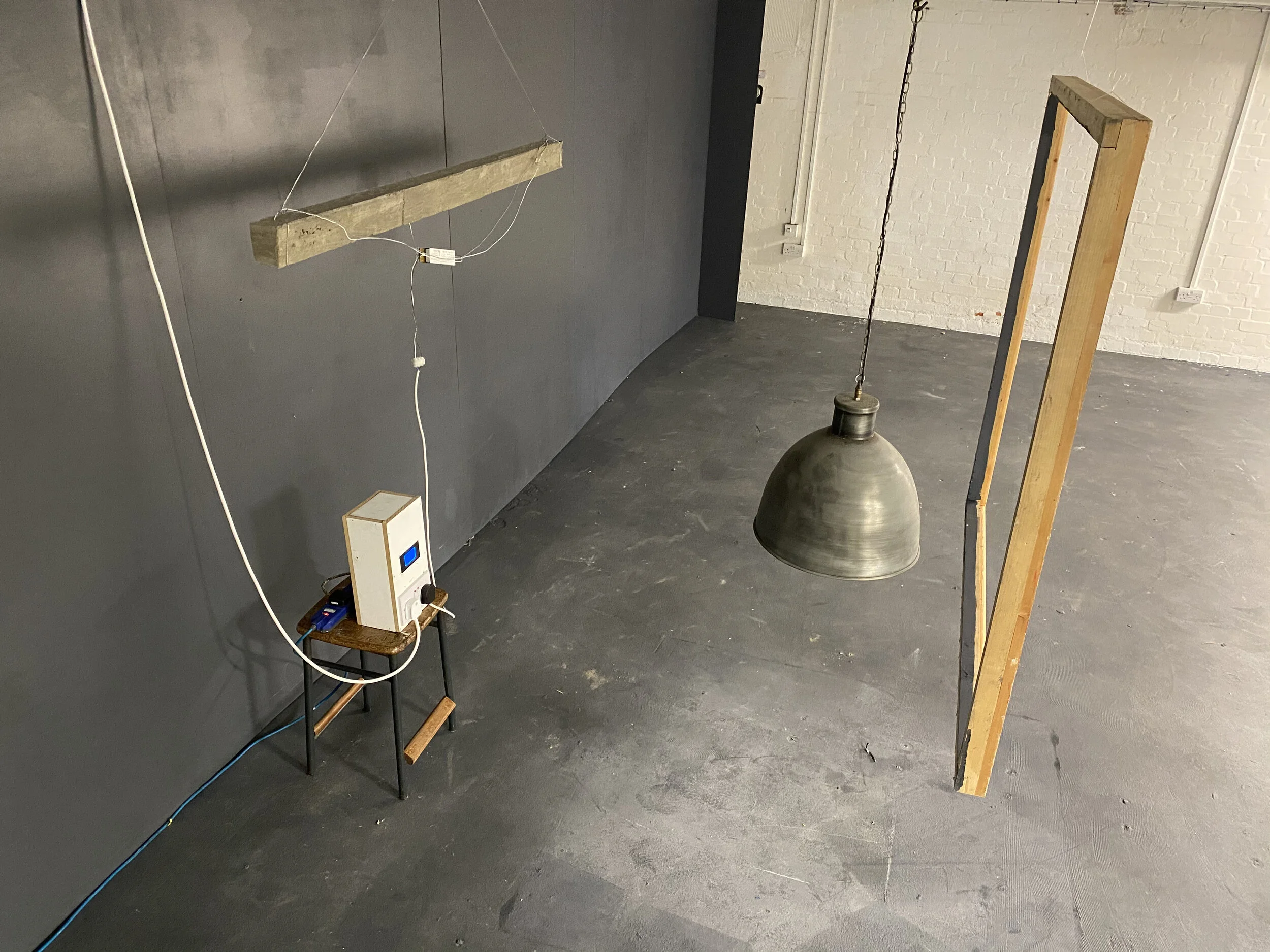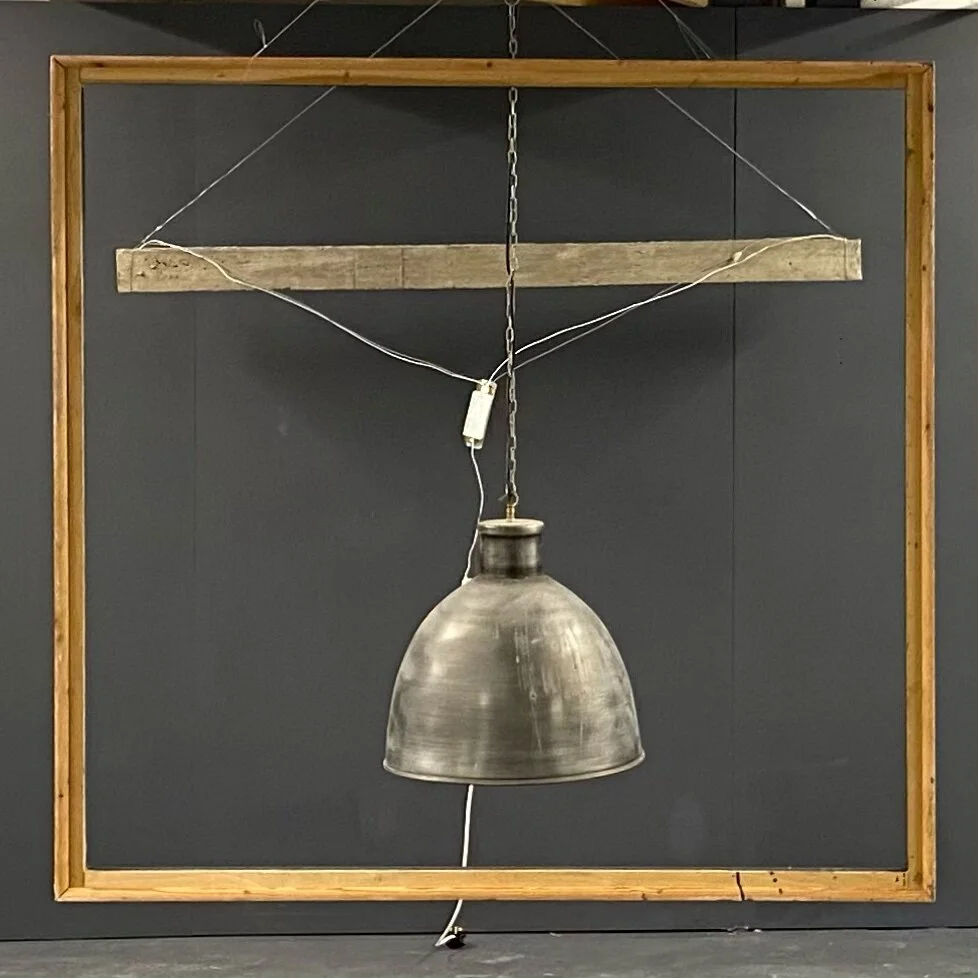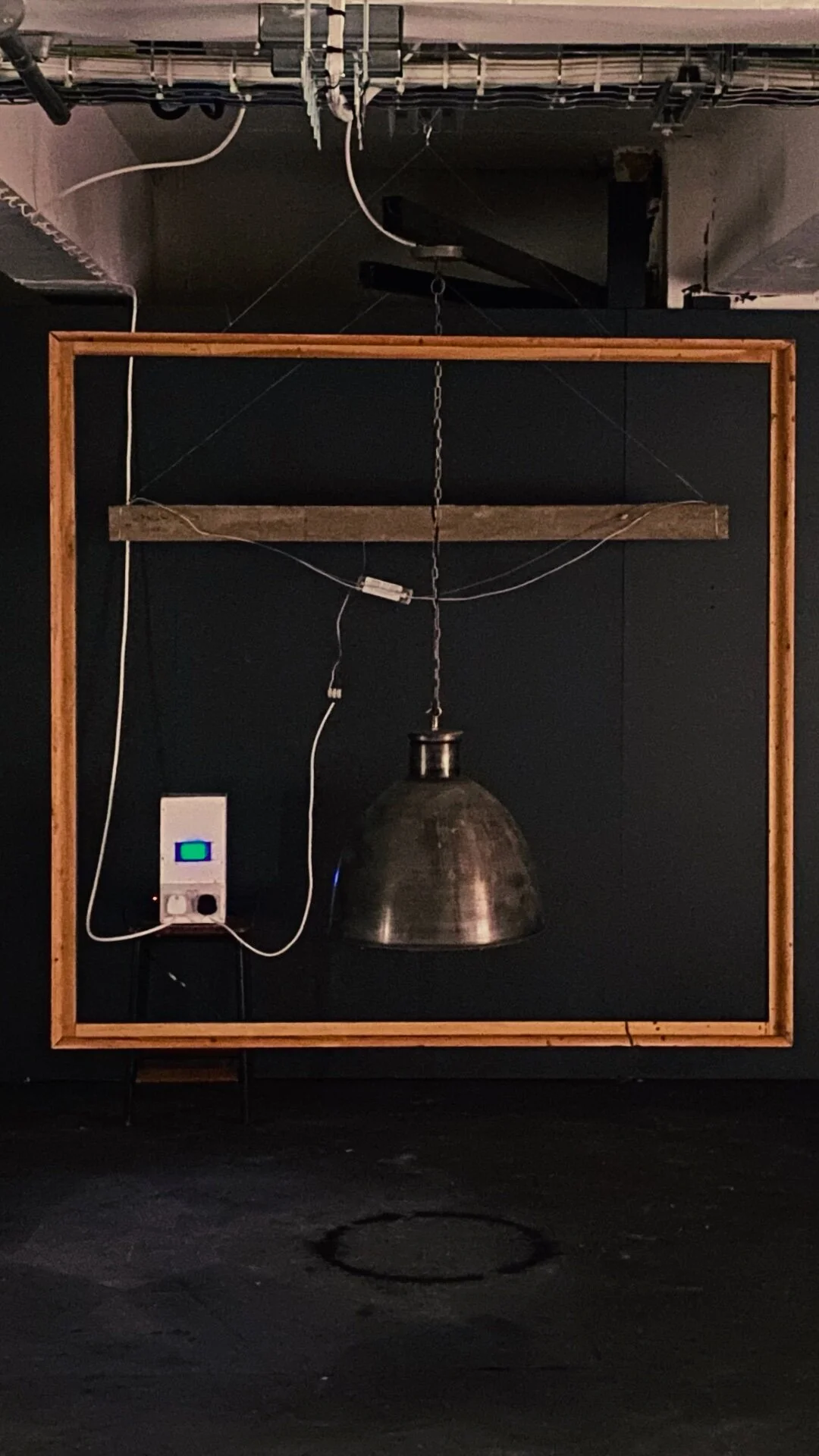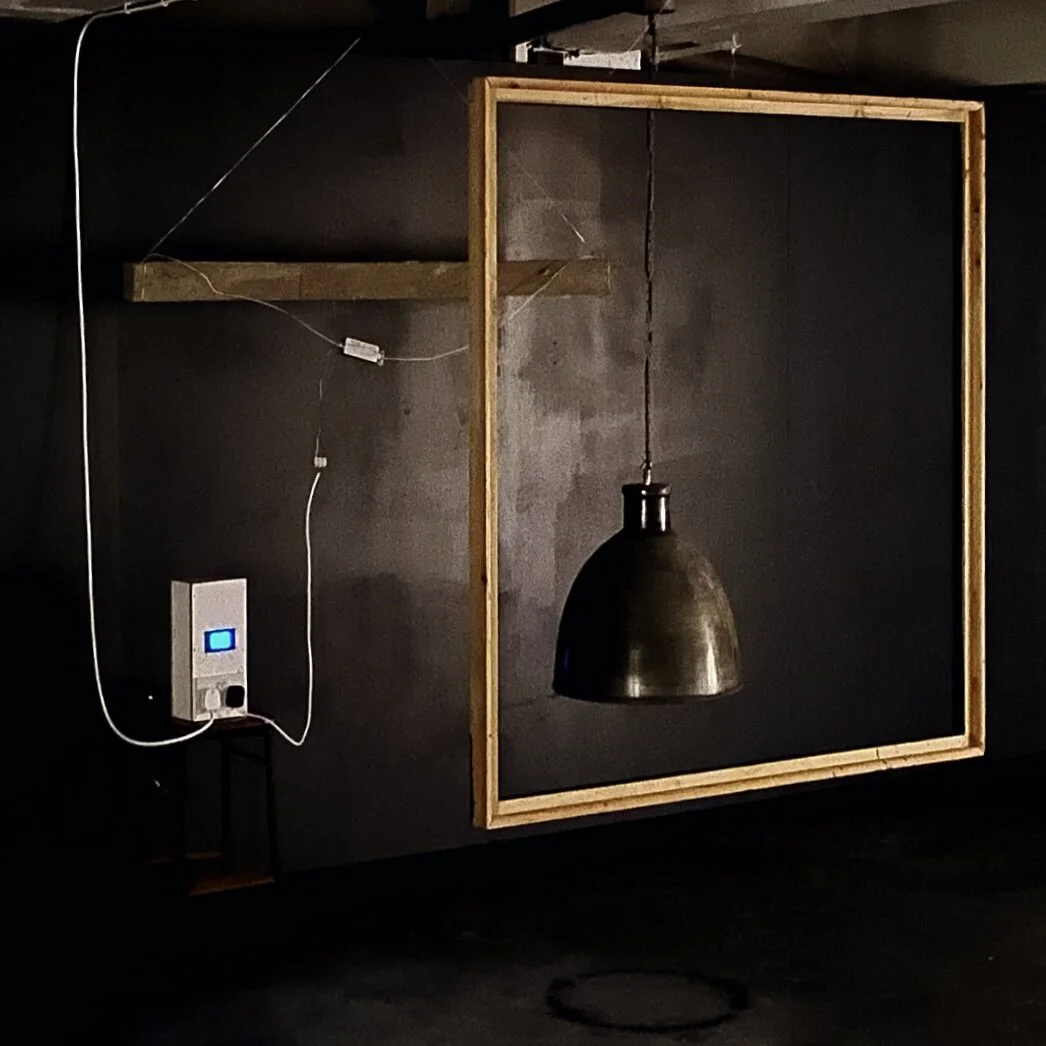Reflection: Beyond the Greenberg Field.
So today has been a massively long day, or it feels like it. I’ve wanted to bring together the series of ‘Concrete Lampshades - 2020-2021’ for a while now, as the year has progressed and witnessing their emergence in the various stages (see gallery below) .
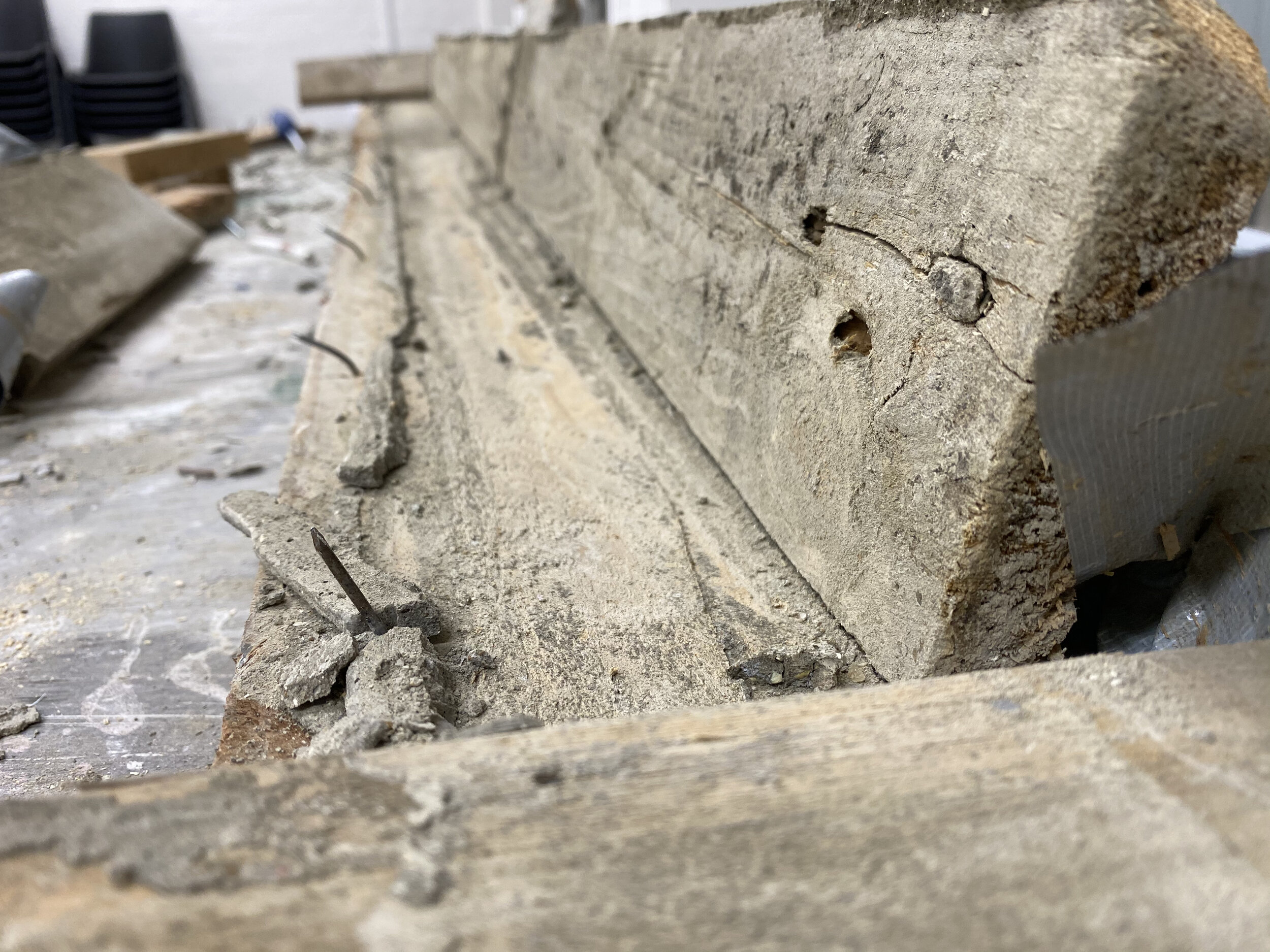
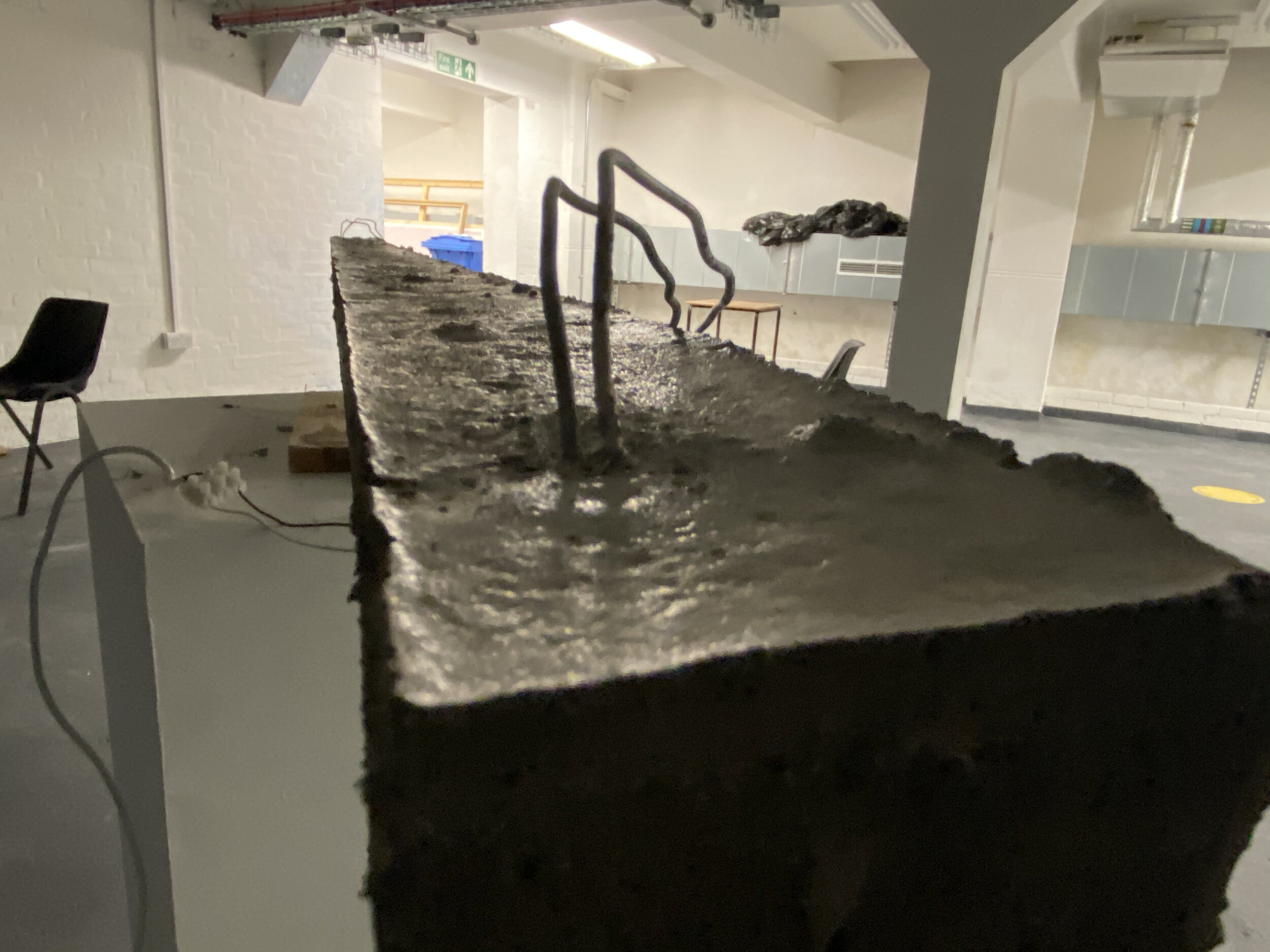


So, today I wasn’t massively sure what it was I wanted to achieve. I started by putting the works Concrete Lampshade II (Fig 2) and concrete Lampshade III (fig. 3), alongside the current measurement device that I had created some weeks back. (fig. 1)
Fig. 1 Voltage Current and Power indicator.
Fig. 2 Concrete Lampshade II, 2021
Stuart Lee
Concrete, Steel, Fluorescent Light tube
Fig. 3 Concrete Lampshade III, 2021
Stuart Lee
Concrete, Metal Lampshade, Tungsten Lamp
During the making process over the last few days I have also been exploring ways of thinking through Graham Harman’s Book Art and Objects, Fig. 4. [1]
This book re-introduced me to the considerations of the Greenbergian ‘Background.’ Something we had briefly touched on in CCS.
Yet art is considered as a foreground, its effects are measured in critique and appreciation. Yet the foreground is something Heidegger and Husserl dismissed as “nieve”. [2]
Yet, Harman reminds us “A deterministic query doesn’t mean that our not noticing may deprive objects ‘of any unexpressed reservoir that might lead to future change.” [3]
This has me questioning my approach to not only setting, but what any layout of objets presents as a ‘givenness’, in a “there being.” [4]
I’ve decided to use an old picture frame in the basement to test this methodology to ‘glitch’ the framing of content.
Greenberg considered the background as important as the content. It’s what gives us a depth of field in propositional terms.
Fig. 4 Setting the scene for ‘Beyond the Greenberg Field’.
Fig. 5 The accessible depth of field.
Fig. 6 Stepping into the field.
Testing the indeterminacy of this field, the quiet paraphrase of the ‘gap’ [5], between The objects in front of us and their visual effects also are enmeshed into ontic foreground, yet the introduction of electricity gives us a happening and enactment of the withdrawn, that which cannot be accessed, either physically or literally. Yes, we are confronted with the boundaries of empirical truth when using “apparatus” [6] to determine what is existing, being yet not known or accessed, so here we prove a paradox of being.
Fig. 7 The first attempt at a composition. Also before any of the electrical components are energized.
So, I wondered what would happen if the content leaked, or broke out of the framing, What if the background, content and foreground become interchangeable? What if we were able to access the Greenbergian Field, or become part of the field itself? What would be able to access? What would happen when we put these parts together, using the actants to co-constitute the relationalities themselves, fig. 4- 6 .
Putting the philosophy aside for one moment, I’m inclined to draw attention to the deliberate acts of positioning. The stool for example fig. 8 & 9, in its utilized sense is a floor upon a floor, a plateau, a level, part of a topographic composition.
I like the fact it forever breaks the boarder, no matter how much you try the view the work face on and see only what is in the frame fig. 7 & 8.
It adds a subversive element. As do the parts and components that hold and suspend the works within the scene. A scene that leaks, defies and over reaches the frame. Yet the frame is complicit in a placement of object and tries, at least, to add boundaries to what otherwise is a collection of arbitrary objects.
Fig. 8 Directionality and potential to face that which confronts is brought into question
Fig. 9 The final composition from an oblique angle.
Bibliography:
[1] Graham Harman, Art and Objects, (Cambridge: Polity Press, 2020)
[2] Graham Harman, Towards Speculative realism: Essays and Lectures, (London: Zero Press, 2009), p. 57 – 58.
[3] Graham Harman, ‘Agential and Speculative Realism: Remarks on Barad’s Ontology’, Rhizomes: Cultural Studies in Emerging Knowledge, Vol. 30, <https://doi.org/10.20415/rhiz/030.e10> [accessed 02/04/2021].
[4] Graham Harman, ‘Objects and the Arts’, Institute of Contemporary Arts, YouTube, 27 March 2014, <https://www.youtube.com/watch?v=QJ0GR9bf00g> [accessed 11/04/2021]. 35:03s Harman here, takes us through the the absence of presence as a meaning of being. that which is visible to us is ‘Being’ (capital B)
[5] Here I use something that I have been trying to define in my CCS practice where I explore Leibnitz’s definition adapted from Aristotles object/form relationality. Exploring “Objects and their Qualities” Cf. Ishii Robertson, Teresa and Philip Atkins, ed. by, Edward N. Zalta, "Essential vs Accidental Properties", The Stanford Encyclopedia of Philosophy (Winter 2020 Edition) <https://plato.stanford.edu/archives/win2020/entries/essential-accidental/> [accessed 12/01/2021] (Para 1.).
